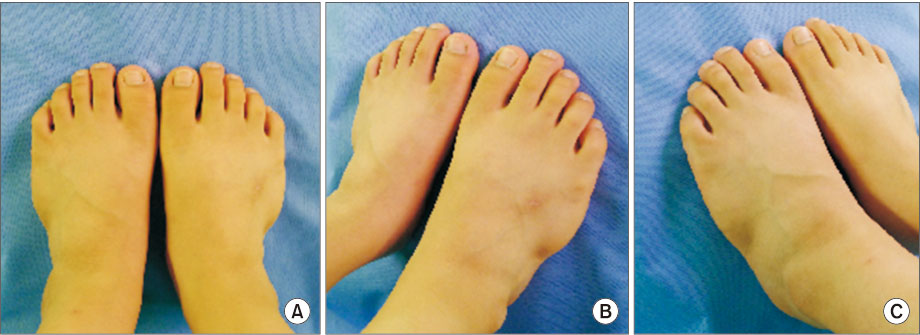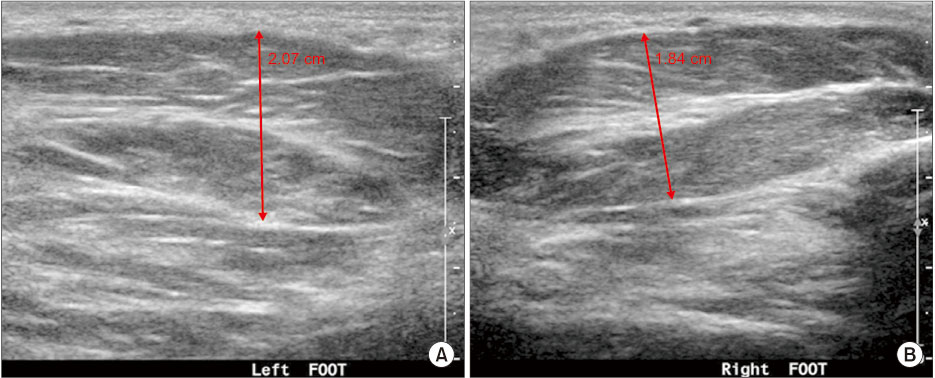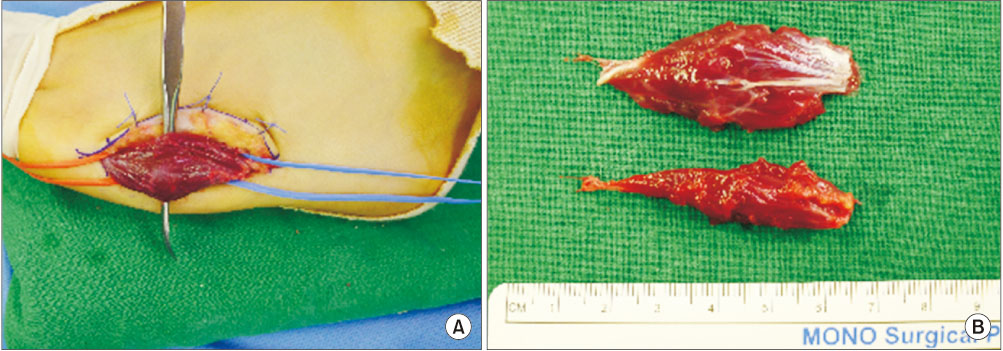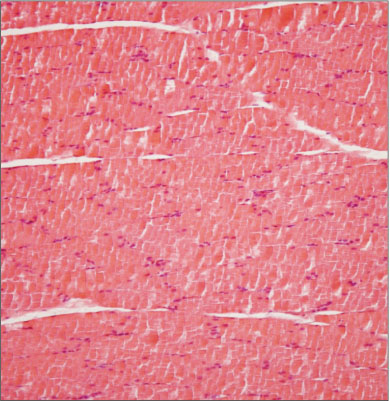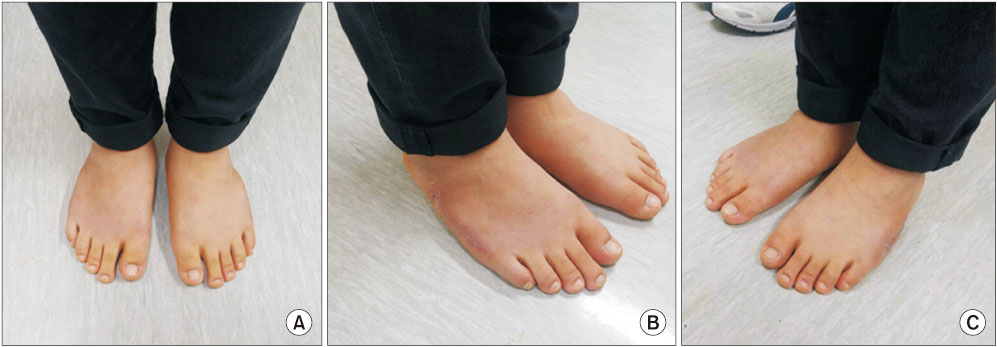J Korean Foot Ankle Soc.
2017 Dec;21(4):170-173. 10.14193/jkfas.2017.21.4.170.
Bilateral Hypertrophy of Abductor Digiti Minimi Simulating a Localized Soft Tissue Mass: A Case Report
- Affiliations
-
- 1Department of Orthopaedic Surgery, Bundang Jesaeng General Hospital, Daejin Medical Center, Seongnam, Korea. sowoosuk@naver.com
- KMID: 2398016
- DOI: http://doi.org/10.14193/jkfas.2017.21.4.170
Abstract
- Soft tissue tumors of the foot have a low incidence rate, and most of them are symptom free, thus it is difficult to diagnose accurately. Herein, we report a 15-year-old male patient who had swelling without pain on the lateral margin of both feet. We performed excisional biopsy of the abductor digiti minimi via subtotal resection, following radiograph and magnetic resonance imaging. According to the histological analysis, hypertrophy of abductor digiti minimi was positive, and other soft tissue tumors were negative. Six months after the operation, normal appearance of both feet was maintained and the patient was satisfied with the result.
Figure
Reference
-
1. Almansoor J, Boothroyd AE, Carty H. Asymmetrical muscle hypertrophy simulating a localised soft tissue mass. J Pediatr Orthop B. 1998; 7:86–88.
Article2. Raab P, Ettl V, Kozuch A, Nöth U. Hypertrophy of the abductor digiti minimi muscle simulating a localised soft tissue mass. Foot Ankle Surg. 2008; 14:43–46.
Article3. Iconomou T, Tsoutsos D, Spyropoulou G, Gravvanis A, Ioannovich J. Congenital hypertrophy of the abductor digiti minimi muscle of the foot. Plast Reconstr Surg. 2005; 115:1223–1225.
Article4. Guy JA, Micheli LJ. Strength training for children and adolescents. J Am Acad Orthop Surg. 2001; 9:29–36.
Article5. Boland BJ, Silbert PL, Groover RV, Wollan PC, Silverstein MD. Skeletal, cardiac, and smooth muscle failure in Duchenne muscular dystrophy. Pediatr Neurol. 1996; 14:7–12.
Article6. Kagel KO, Ott J, Lorenz G, Mieler W. Clinical picture, symptomatology and therapy of partial angiodysplastic gigantism resembling the Klippel-Trenaunay-P.-Weber syndrome type. Zentralbl Chir. 1972; 97:50–57.7. Boothroyd AE, Carty H. The painless soft tissue mass in childhood--tumour or not? Postgrad Med J. 1995; 71:10–16.
Article8. Montgomery F, Miller R. Hypertrophic extensor digitorum brevis muscles simulating pseudotumors: a case report. Foot Ankle Int. 1998; 19:566–567.
Article9. Ringelman PR, Goldberg NH. Hypertrophy of the abductor hallicus muscle: an unusual congenital foot mass. Foot Ankle. 1993; 14:366–369.
Article10. Dunn AW. Anomalous muscles simulating soft-tissue tumors in the lower extremities. Report of three cases. J Bone Joint Surg Am. 1965; 47:1397–1400.
Article
- Full Text Links
- Actions
-
Cited
- CITED
-
- Close
- Share
- Similar articles
-
- Abductor Digiti Minimi Muscle Flap on Chronic Osteomyelitis of Calcaneus: A Case Report
- Guyon’s Canal Syndrome Caused by an Accessory Abductor Digiti Minimi Muscle
- Compression Neuropathy of the Ulnar Nerve due to the Accessory Abductor Digiti Minimi at Guyon’s Canal: A Case Report
- Treatment of Extensor Digiti Minimi Triggering: Two Cases Report
- Reconstruction of a Soft Tissue Defect of the Lateral Ankle with the Abductor Digiti Minimi Muscle Flap: A Case Report

